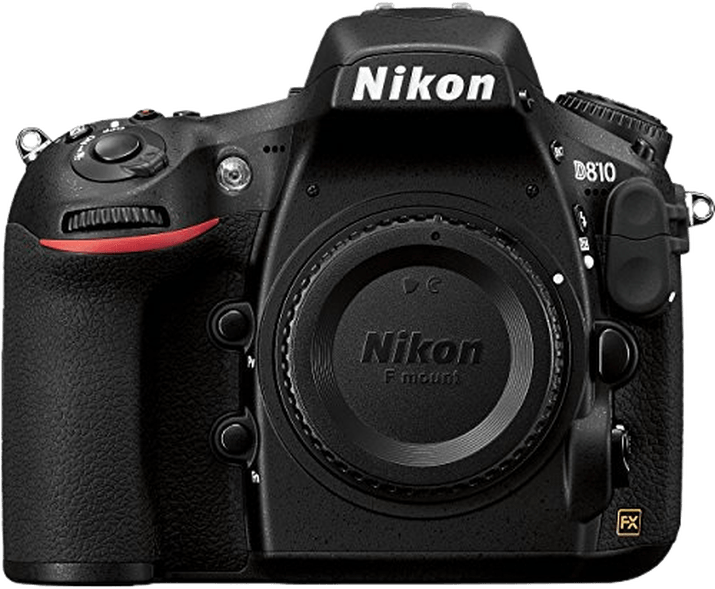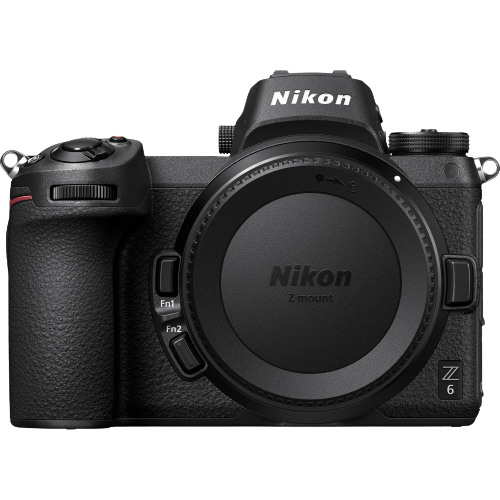Nikon D810 vs Z6 Comparison
Nikon D810

Nikon Z6

The Nikon Z6 takes the lead in this comparison with a score of 81/100, while the Nikon D810 follows closely behind with a score of 72/100. Both cameras share similarities in being high-quality Nikon cameras that were launched at different times, with the D810 in 2014 and the Z6 in 2018.
The Nikon Z6 outshines the D810 with its mirrorless design, making it significantly lighter at 675g compared to the D810’s 980g. Additionally, the Z6 has a smaller size, measuring 134 x 101 x 68mm, while the D810 measures 146 x 123 x 82mm. The Z6 also boasts a more affordable launch price of $2000, compared to the D810’s $3300.
On the other hand, the Nikon D810, as a DSLR, still holds its ground with its solid build and performance. Some may argue that its higher launch price signifies a more premium product. However, it’s essential to remember that the Z6’s higher score reflects its overall better performance and value.
Taking these factors into account, it’s clear that the Nikon Z6 offers a more compact, lightweight, and cost-effective solution, making it the winner in this comparison. The Nikon D810, while still a reliable choice, may not provide the same advantages as its newer counterpart.
Nikon D810 vs Z6 Overview and Optics
The Nikon Z6 takes the lead in optics with a score of 83/100, outperforming the Nikon D810 which scores 76/100. Both cameras share some common specifications, including a CMOS sensor, full-frame sensor size, and the ability to shoot in RAW format. Despite these similarities, there are key differences that set these two cameras apart.
The Nikon Z6 boasts a superior Expeed 6 processor and an impressive shooting speed of 12 frames per second, doubling the Nikon D810’s 5 frames per second. This faster shooting speed allows the Z6 to capture fast-paced action and fleeting moments with ease. Additionally, the Nikon Z6 features image stabilization, which the D810 lacks. This technology compensates for camera shake, resulting in sharper images, especially in low light conditions or when using telephoto lenses.
On the other hand, the Nikon D810 has a higher megapixel count at 36.3 compared to the Z6’s 24.5. This allows the D810 to capture more detail and produce larger prints. Furthermore, the D810 has a slightly higher DXOMARK score for its sensor at 97, compared to the Z6’s 95. This indicates that the D810 may have a slight edge in terms of image quality and dynamic range.
However, the advantages of the Nikon Z6, such as its faster shooting speed and image stabilization, make it a more versatile camera for various shooting situations. The Nikon D810’s higher megapixel count and DXOMARK score may be beneficial for photographers who prioritize image quality and large prints. Ultimately, the Nikon Z6’s superior optics and features make it the more appealing choice for a broader range of photographers.
Nikon D810 vs Z6 Video Performance
The Nikon Z6 outperforms the Nikon D810 in video capabilities with a video score of 83/100 compared to the D810’s 70/100. Both cameras share some common features, such as a maximum video frame rate of 60fps and built-in time-lapse functionality. However, the Nikon Z6 surpasses the D810 in key areas, making it the superior choice for video.
The most significant advantage of the Nikon Z6 is its 4K video resolution, which is a substantial improvement over the D810’s Full HD resolution. The Z6’s maximum video dimensions are 3840 x 2160, allowing for more detailed and sharper footage. This higher resolution is crucial for videographers seeking to produce high-quality content.
Although the Nikon D810 does not excel in video resolution, it still offers respectable video quality with Full HD resolution and a maximum video dimension of 1920 x 1080. This may suffice for casual videographers or those who do not require the highest resolution for their projects. However, it is worth noting that the D810 falls short in terms of video capabilities compared to the Z6.
Taking into account the significant difference in video scores and the superior 4K resolution offered by the Nikon Z6, it is evident that the Z6 is the better choice for videographers. While the Nikon D810 may be sufficient for some users, the Z6 undoubtedly provides a more advanced and higher-quality video experience.
Nikon D810 vs Z6 Features and Benefits
The Nikon Z6 outperforms the Nikon D810 with a feature score of 87/100 compared to the D810’s score of 59/100. Both cameras share some specifications, including a 3.2-inch screen, no flip screen, no GPS, and WIFI capabilities.
The Z6 holds an advantage over the D810 in several areas. Its screen resolution is significantly higher at 2,100,000 dots compared to the D810’s 1,229,000 dots, providing a clearer and more detailed display. Additionally, the Z6 has a touchscreen, making it easier and more intuitive to navigate menus and settings. The Z6 also includes Bluetooth connectivity, allowing for seamless pairing with compatible devices and enhancing remote control options.
On the other hand, the D810’s features are relatively limited compared to the Z6. It lacks a touchscreen and Bluetooth connectivity, resulting in a less user-friendly experience. However, it is important to note that these shortcomings do not necessarily make the D810 a worse camera, but rather highlight the areas where the Z6 has improved upon its predecessor.
Taking these factors into account, it is evident that the Nikon Z6 offers more advanced features than the D810. Its higher screen resolution, touchscreen capabilities, and Bluetooth connectivity contribute to its higher feature score and make it a more attractive option for photographers seeking a versatile and user-friendly camera. While the D810 may still be a reliable option for certain photographers, the Z6’s improvements in these areas provide a compelling reason to choose it over its predecessor.
Nikon D810 vs Z6 Storage and Battery
The Nikon D810 triumphs over the Nikon Z6 in storage and battery with a score of 79/100 compared to 35/100. Both cameras use the same battery type, EN-EL15, and offer USB charging, but the similarities end there.
The D810 excels with two memory card slots, accepting SD/SDHC/SDXC, Compact Flash, and UDMA cards. This flexibility allows for more storage options and backup capabilities. Additionally, the D810 boasts an impressive battery life of 1200 shots, significantly outlasting the Z6’s 310 shots.
The Z6, however, does have the advantage of accepting XQD memory cards, which offer faster read and write speeds than the other card types. Despite this, the Z6 falls short with only one memory card slot and a considerably shorter battery life.
Taking these factors into account, the Nikon D810 is the clear winner in terms of storage and battery capabilities, offering more versatility and longer shooting sessions. The Nikon Z6’s faster memory card compatibility may be a plus for some users, but it cannot compete with the D810’s overall performance in this category.
Alternatives to the Nikon D810 and Z6
Are you still undecided about which camera is right for you? Have a look at these popular comparisons that feature the Nikon D810 or the Nikon Z6:

